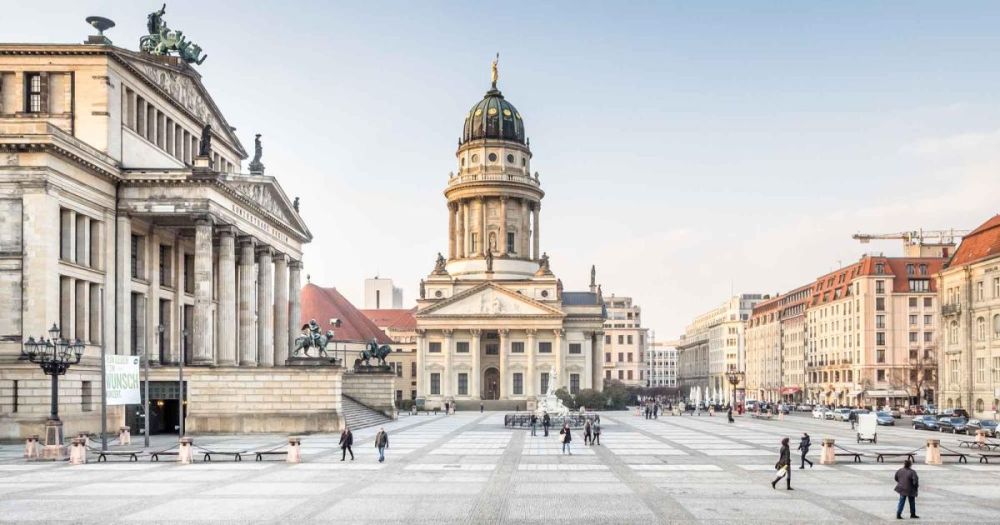

Founded in the 17th century, the Gendarmenmarkt has undergone numerous transformations and has played many roles throughout its history. Initially a market square, its name is derived from the "Gens d'armes," which was a Prussian cavalry regiment stationed here during the 18th century.
The square is dominated by three historically and architecturally significant buildings: the Konzerthaus Berlin (Concert House), flanked by the German Cathedral (Deutscher Dom) on its one side and the French Cathedral (Französischer Dom) on the other. The cathedrals were constructed by the German and French Huguenot communities respectively, and they symbolize the historical tolerance and cosmopolitan nature of Berlin.
The Konzerthaus Berlin, designed by Karl Friedrich Schinkel and constructed in the early 19th century, replaced the National Theatre which was destroyed by fire. The building further augmented the square's status not merely as a marketplace but as a cultural hub.
Significantly damaged during World War II, the Gendarmenmarkt was meticulously restored to its former glory, symbolizing Berlin's resilience and commitment to preserving its rich cultural heritage.
In contemporary times, the Gendarmenmarkt remains a focal point of Berlin's tourism. Visitors are drawn to its classical concerts, and the open-air art market where artists display and sell their work. Food enthusiasts also frequent the prestigious restaurants located around the square. However, the most recent trend in tourism at the Gendarmenmarkt is the rise of its popularity as a venue for high-profile events.
The Christmas Market (WeihnachtsZauber) at Gendarmenmarkt is particularly famous, ranking as one of the most enchanting Christmas markets in Europe. Amidst the neoclassical architecture, stalls offer a variety of traditional crafts, gourmet food, and warm beverages. The festive ambiance is enhanced by live performances, making it a seasonal attraction that draws both locals and tourists globally.
Another trend is historical and cultural tourism. Guided tours educating visitors about the history of the square, its buildings, and their significance in German history have become increasingly popular. Tourists are interested in experiencing the storytelling of the past, unfolding the layers of Berlin's history embedded within the precinct of Gendarmenmarkt.
The future of tourism at Gendarmenmarkt seems to integrate technology with experience. Augmented reality (AR) tours are beginning to gain popularity offering an interactive and immersive experience. These technological advancements promise a blend of the past and future, as visitors explore historical tales while engaging with contemporary digital enhancements.
With ongoing interest in sustainable and responsible tourism, there is a movement towards more eco-friendly practices among the businesses surrounding Gendarmenmarkt. Initiatives like waste reduction and the promotion of local products are increasingly being adopted, this is not only in keeping with global tourism trends but also resonates with the conscious traveler's values.
Tourism at Gendarmenmarkt has a bright future, with its combination of rich heritage, immersive cultural experiences, and evolving tourism trends. Its ability to adapt while maintaining its historical essence makes it a timeless destination in Berlin.